 Melissa Anderson
Melissa Anderson
In Chantal Akerman’s newly restored 1982 film, lovers unite and separate over the course of one summer night in a series of mysterious vignettes.
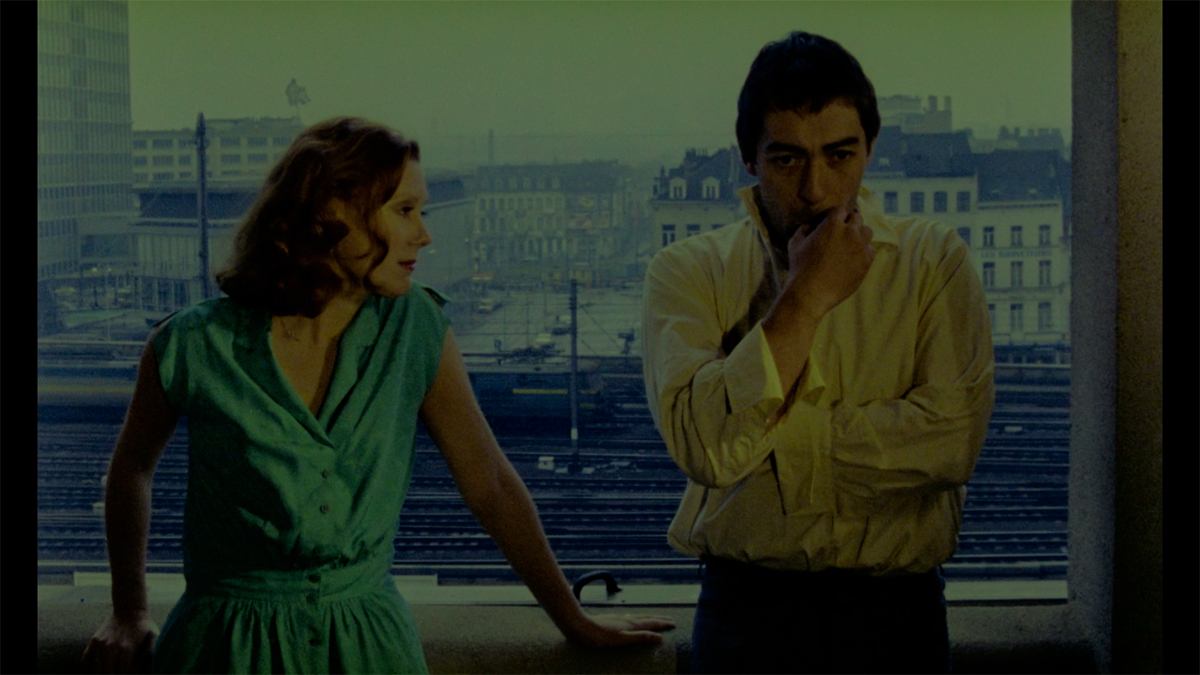
Still from Toute une nuit. Courtesy Collections CINEMATEK. © Fondation Chantal Akerman.
Toute une nuit, written and directed by Chantal Akerman, screening January 23, 2024 and February 4, 2024, Museum of Modern Art,
11 West Fifty-Third Street, New York City
• • •
“With my films, you feel every second passing through your body,” Chantal Akerman once said, an apt avowal from a director who demonstrated again and again the epic power of quotidian actions. Whether in narratives or documentaries, her long, static, precisely composed takes—of potatoes being peeled in Jeanne Dielman (1975), of a tree buffeted by harsh desert winds in No Home Movie (2015)—redefined what it means to watch, to pay attention.
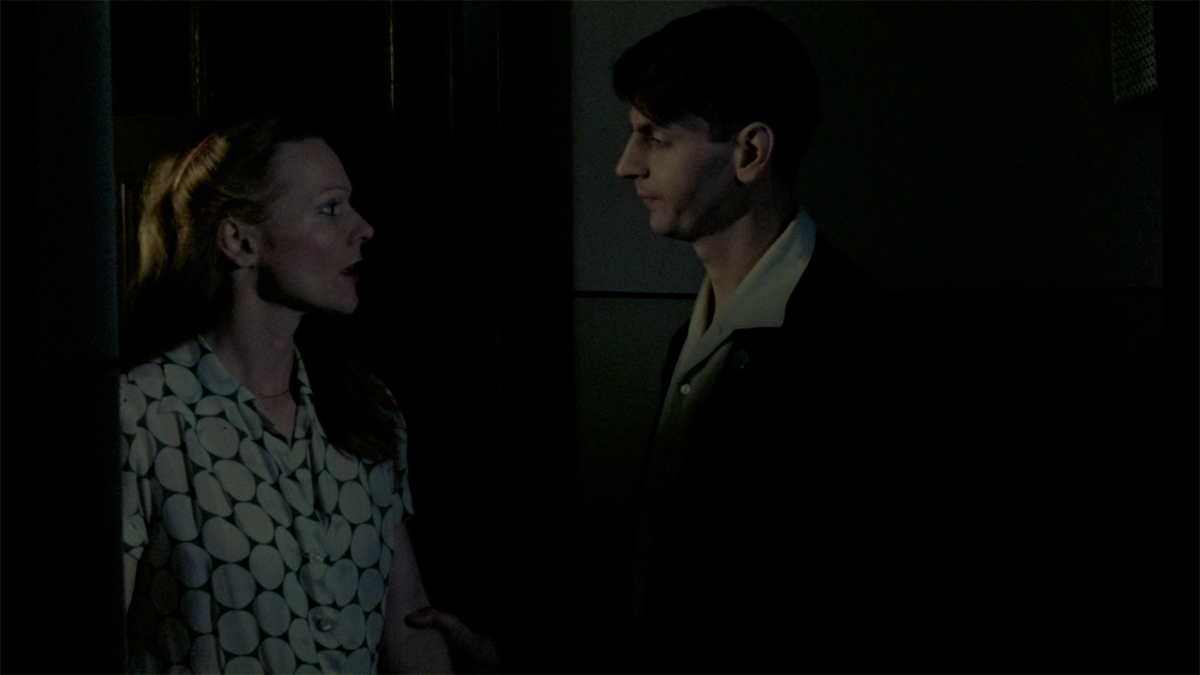
Still from Toute une nuit. Courtesy Collections CINEMATEK. © Fondation Chantal Akerman.
While she is best known for episodes in which there is little movement or only one person in the frame, Akerman also excelled at capturing intricate motions among scores of individuals, evidenced early on in her sublime, doleful salute to New York City, News from Home (1976). In one segment, the camera rests on the fantastic choreography unfolding at the Times Square subway station: bodies, resplendent in Bicentennial Summer fashions, exiting and entering the arriving and departing graffiti-bombed trains. Rarely shown and newly restored, Akerman’s Toute une nuit (1982), translated as “All Night Long” or “A Whole Night,” showcases her talent for orchestrating a particular pas de deux: lovers uniting or separating. (Toute une nuit screens with another, shorter work from 1982, Hôtel des Acacias—which reveals a similar fascination with individuals coupling and uncoupling and was made by film students of Akerman’s under her supervision—as part of the twentieth edition of “To Save and Project,” MoMA’s tonic festival devoted to recently restored films, now underway and running through February 4.)
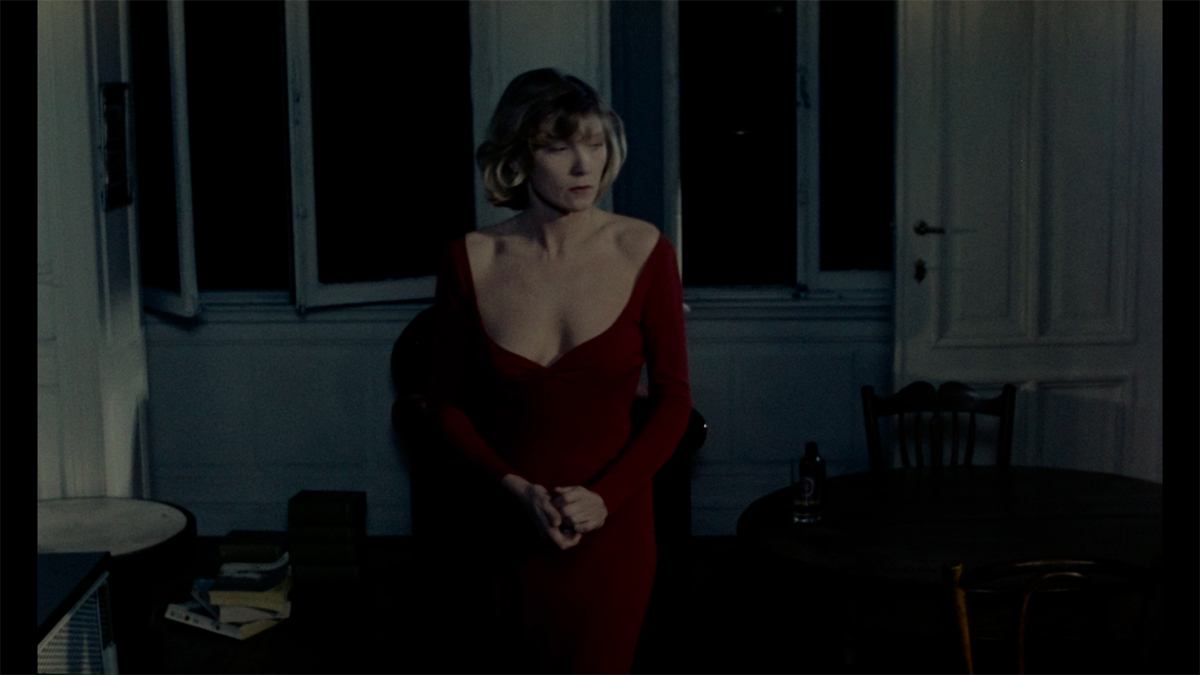
Still from Toute une nuit. Courtesy Collections CINEMATEK. © Fondation Chantal Akerman.
Toute une nuit, which takes place in various neighborhoods in Brussels, Akerman’s hometown, and spans the wee hours of one summer night, boasts a cast of dozens of performers, both professional and non, of whom I recognized only two. One was Aurore Clément, the enchantingly voiced actress who first collaborated with Akerman on the semiautobiographical Les rendez-vous d’Anna (1978), in which she plays a filmmaker, drifting deeper into disconsolation, who travels to Germany to present her latest work. The other was Natalia Akerman, the director’s maman and the star attraction of No Home Movie, the tender, at times deliberately agonizing portrait of the final years of a supremely endearing, increasingly fragile matriarch. But each person onscreen in Toute une nuit, however fleetingly, makes an indelible impression—whether through a physical attribute (a luxuriant mustache, a cascade of hair, a sweat-dampened potbelly), a garment (a woman’s ruby-red blazer with upturned collar, a man’s hot-pink oxford), a gesture (a caress of a sleeping beloved’s face, an arm shooting up to hail a taxi), a declaration in an otherwise mostly wordless film (the man who, after reaching his darling’s answering machine, says in charmingly accented English, “I am thinking of you all the time. I am counting the days until I am in New York. Twenty-three days”).

Still from Toute une nuit. Courtesy Collections CINEMATEK. © Fondation Chantal Akerman.
Each segment lasts about a minute; only some of the characters, almost all of them nameless, reappear later. Despite the anonymity of her dramatis personae, Akerman brilliantly conjures a sense of narrative tension throughout every chapter—the viewer is invited to fill in backstory where none is overtly presented and to imagine what happens next after a scene ends. Surprises abound. In an early episode, a man and a woman sit at two separate tables side by side at a café, each looking forlorn and nursing a beer. About two feet divide them, but each, fully absorbed in their own private woe, seems miles apart. He gets up, pays his bill, and exits the frame—only to return seconds later to share a hungry embrace with her. Are they strangers who connect to salve their misery? Or lovers making up after a lethal silence? Akerman lets us come to our own conclusions, allowing to stand the great mystery of what draws one human being to another.
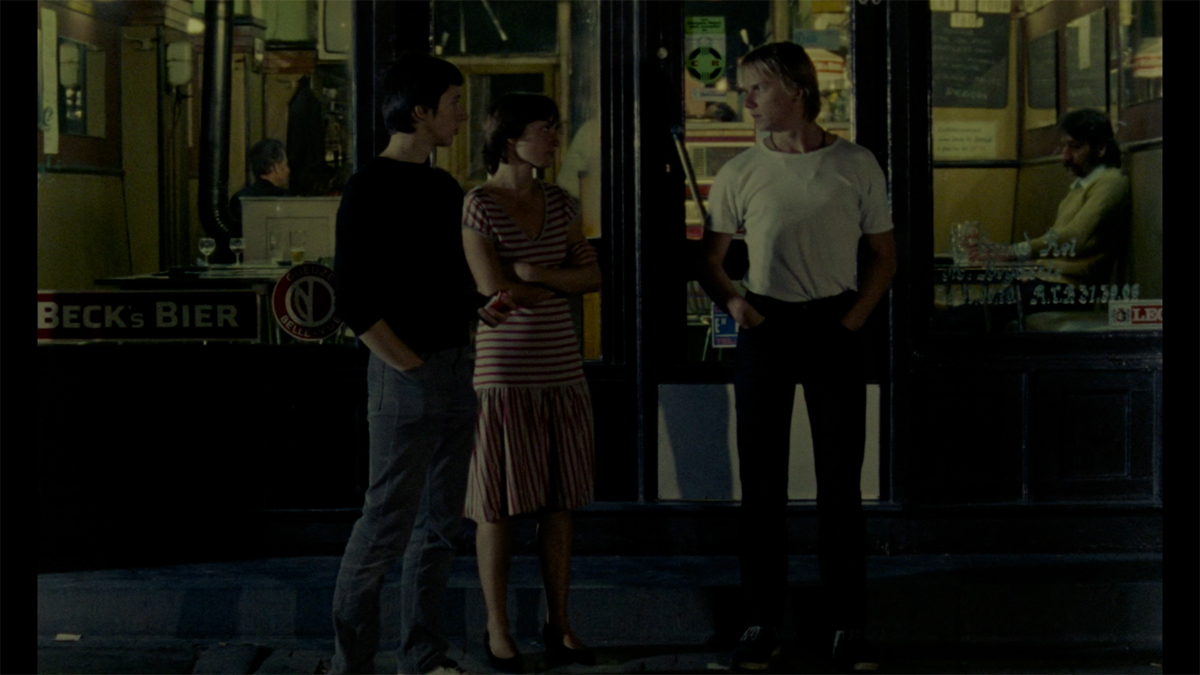
Still from Toute une nuit. Courtesy Collections CINEMATEK. © Fondation Chantal Akerman.
The ardent, full-body hug repeats throughout Toute une nuit. (The filmmaker’s fascination with this close contact—with the small but potent spectacle of two people falling into, sometimes colliding with, each other—was also shared by Pina Bausch, whose dance company is the subject of Akerman’s intimate 1983 documentary One Day Pina Asked . . . .) And while the couple is the dominant configuration, two isn’t the only number. A trio consisting of two men and a woman, all twentysomethings, exchange a series of looks at a café table; one by one they storm out to the sidewalk. One guy asks the woman, “So who are you going with?” But each of them heads off in a different direction before she answers, if she ever does. Again we are left to wonder: Will they reconnect later that night? As a threesome? A twosome? Or will they never see one another again?

Still from Toute une nuit. Courtesy Collections CINEMATEK. © Fondation Chantal Akerman.
Even more enigmatic are the segments featuring only one person, such as the little girl in a pink dress, no older than ten, running out of her house, a tiny suitcase and the family cat in tow. Or the middle-aged man at his work desk, totting up sums on a calculator. Outliers in Akerman’s assembly of lovers, they are nonetheless crucial to her investigation of what the cover of darkness can make possible, whether dramatic escape or catching up with bureaucratic drudgery.
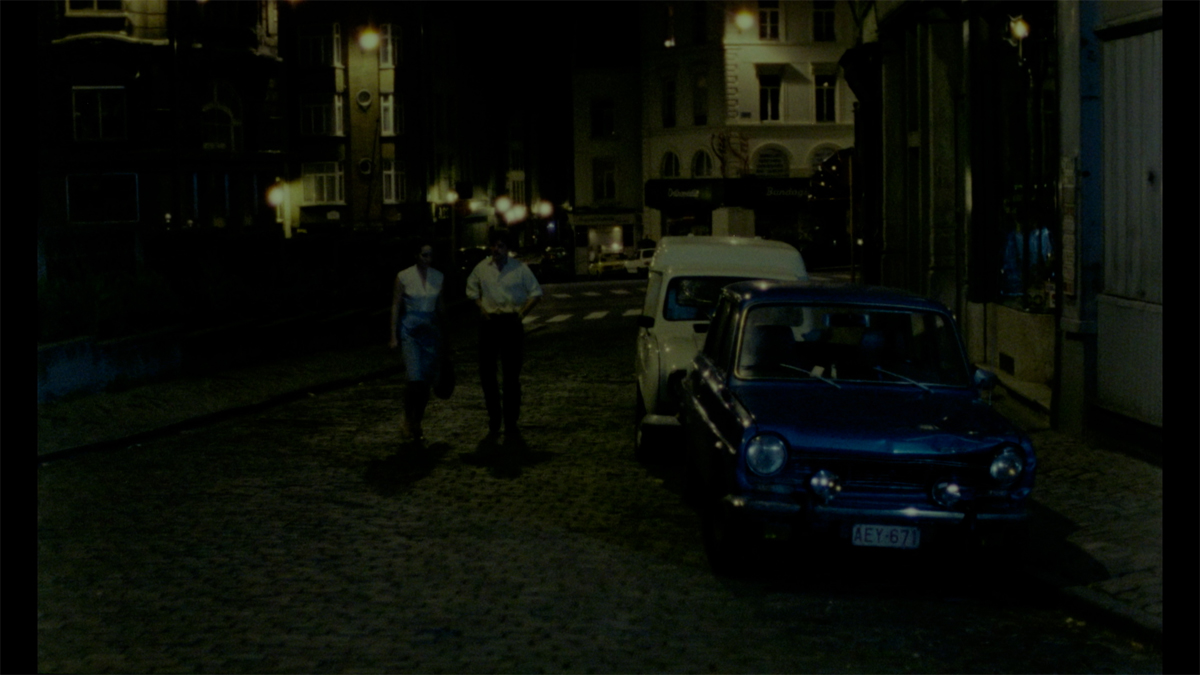
Still from Toute une nuit. Courtesy Collections CINEMATEK. © Fondation Chantal Akerman.
Although there are few lines of dialogue in Toute une nuit, the film is filled with euphony: the musique concrète of heels clacking on the pavement or running up and down stairs, the Euro ballads “Ma révérence” and “L’amore perdonerà” playing in full as couples slow dance, the rumble of thunder and the patter of rain as dawn approaches, birdsong as day breaks. With its meticulous attention to sound and the way that a body moves and orbits around others, Toute une nuit is a musical of sorts, a genre that Akerman would explore more fully a few years later with Golden Eighties (1986), set in a shopping mall. Both films—like the MGM extravaganzas of the 1950s and, closer to home, the Jacques Demy musicals that tweaked Hollywood conventions—spotlight the astounding in the everyday occurrence. But Toute une nuit stands alone in reminding us, in its final shot, of the extraordinary sight of two people, long separated, entwining themselves on a bed.
Melissa Anderson is the film editor of 4Columns and the author of a monograph on David Lynch’s Inland Empire from Fireflies Press.